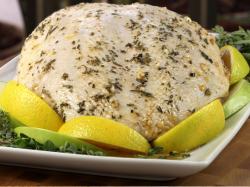Turkey Consumption Edges Up; Turkey Products Growth Stronger Than Chicken
December 27, 2012 | 2 min to read

It is well known that when it comes to poultry sales, chicken rules the roost, but as the holidays approach, could it be time for turkey to gobble up a bigger share of the US market? According to new research from Mintel on the US poultry market, it just might be as sales of turkey, duck, and other specialty birds, grew a considerable 6.5% in just one year, reaching $7.1 billion (2011-12).
Growing from $6 billion in 2008, other poultry products, largely consisting of turkey, grew the most in this category. Moreover, more than eight in 10 (84%) Americans say they eat turkey; chicken is eaten by 94% and other poultry, such as duck, goose and hen, are consumed by 23% of the population.
Today, poultry in the US is valued at $30 billion (2012), with chicken parts accounting for 58% of the total poultry market. Worth $17.3 billion in 2011, sales of chicken parts grew 4.5% year on year. Meanwhile, whole chickens weren’t chicken scratch, with sales of $5.5 billion in 2012, an increase of 0.6% over 2011.
John N. Frank, category manager for Mintel Food and Drink, said:
“The growth of other poultry products over 2011 and 2012 is partly attributed to the increasing popularity of Heritage turkeys, which are bigger, take longer to reach maturity, and sell for more than standard turkeys. However, if other poultry products, like turkey, want to continue their impressive growth and not just be seen as the festive centerpiece, they will need to provide the level of innovation that is being seen in the chicken parts segment. As for the poultry market as a whole, it’s not surprising that chicken parts make up the majority of sales – they represent an attractive option for shoppers who want a convenient and healthy choice for quick dinners, while whole chickens take a substantial amount of time to prepare and culinary know-how.”
Poultry in general might also start pulling in some consumers from the red meat market. Nearly four in 10 (38%) US consumers say they have increased their consumption of poultry in the last year, peaking among younger adults, with 43% of those aged 18-24 eating more versus 36% of the most senior consumers ( aged 65+).
“As obesity rates in the US continue to be an issue, low-fat meal options such as white meat poultry should benefit from consumers who are looking for items that will help them maintain healthy weight. Moreover, budget pressures continue to drive-eating at home over dining out, as preparing meals at home typically costs far less than-eating out and the relative affordability of poultry items makes them an ideal meal option for consumers preparing meals at home. As for younger consumers, they are the most likely to have increased their poultry consumption in the last year, reflecting well on the market in that younger consumers are the least likely to possess cooking skills and therefore are likely finding value-added, ready-to-cook (seasoned, marinated) poultry products more convenient than ever,” John Frank explains.
Moreover, ethnic consumers are a driving force behind the poultry market, with 73% of Asian or Pacific Islanders and 72% of Hispanic and Black consumers cooking chicken at home, as opposed to 62% of White consumers.
Source: Mintel
